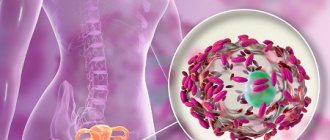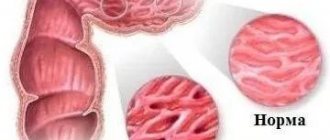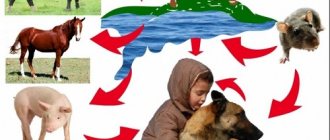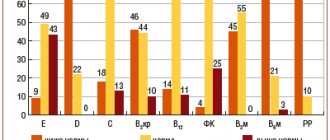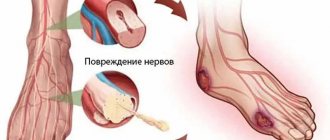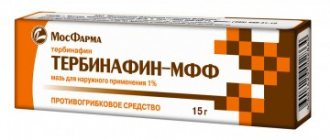An unusual disease in which a person is unable to control his own sleep and wakefulness is called “narcolepsy.” It comes from the Greek words narkē, meaning numbness, and lēpsis, meaning sleep.
This neurological disorder is also called paroxysm of intractable sleepiness or Gelineau's disease. This French neurologist first described this disease in the late seventies of the 19th century. For several years, Jean Baptiste Edouard observed a 38-year-old wine merchant who went to the doctor with his problem.
A man could fall asleep up to two hundred times during the day while eating, sitting in a theater chair at a performance, or while talking - starting to speak and “passing out” mid-sentence. During intense experiences and a surge of emotions, his drowsiness was accompanied by a loss of muscle tone, and he fell. His consciousness remained quite clear. Gelineau called this case cataplexy.
Doctor Samuel Brock (USA) in 1928 discovered another form of narcolepsy, which he called sleep paralysis. His patient, a twenty-two-year-old boy, suffered from attacks of drowsiness and catalepsy, but these were also followed by a temporary inability to move and speak. In this state, he experienced very plausible hallucinations, which were generally unusual for him.
Causes of a special illness
Narcolepsy is a fairly rare disease (affects 1 person out of 2 thousand). It develops mainly in 20-50 year old men, but can also appear in childhood. Despite its low prevalence, this pathology is very dangerous, because an individual can suddenly fall asleep at any moment and anywhere while performing some action. Such an attack cannot be controlled and therefore interferes with normal activities - it is impossible to properly study, work, do everyday activities, or drive a car. All this negatively affects personal and social life. Children with this disease are developmentally delayed.
The sensations of those suffering from narcolepsy are similar to those experienced by people who have not slept for two days, and this reduces the quality of life.
Researchers cannot explain the exact cause of drowsiness syndrome, since it has not been studied enough due to its uniqueness. However, it turned out that psychological and psychiatric problems are not to blame.
Currently, the following factors for the development of the disease are called:
- heredity;
- lack of special genes of hypocretins (orexins) - neurotransmitters that ensure the transmission of signals to sleep and awakening in the brain;
- dysfunction of the immune system;
- overwork;
- severe infections;
- skull injuries;
- viral diseases;
- malfunctions of the endocrine glands, including the pituitary gland.
Sleepy during the day and at night, narcoleptics often have trouble falling asleep or constantly wake up. This is associated with abnormalities in the areas of the brain that regulate the main stages of sleep: the rapid phase occurs earlier than normal, and the deep phase is absent altogether.
Sources
Narcolepsy is a painful process that occurs in the nervous system of the human body, which manifests itself in problems with sleep and repeated uncontrollable falling asleep during waking hours. To date, scientists have not been able to formulate specific factors influencing the spread of the disease. However, there is an assertion that the presented disease appears due to a lack of a biologically active component of the brain - orexin. It is this element that is responsible for regulating the stages of sleep and awakening. The most likely causes of this disease include:
- Hormonal disbalance.
- Injuries and infectious lesions of the brain.
- Genetic predisposition.
- Presence of diabetes mellitus.
- Autoimmune diseases.
- High level of fatigue.
- Psychological disorders.
- Carrying a child.
Manifestations of paroxysm of irresistible drowsiness
Symptoms of the disease first appear in adolescents or young adults, either immediately, or worsen gradually as they grow older:
- Strong desire to sleep during the day, despite a sufficient amount of sleep at night. Such irresistible drowsiness interferes with normal activity, as it is accompanied by lethargy, foggy thinking, apathy, and difficulty concentrating. A person feels “broken,” “squeezed like a lemon,” and constantly tired. He is not in the mood, he is constantly irritated, cannot remember important information, and loses motivation. At any moment and under any circumstances, the patient can fall asleep, and such attacks occur several times a day. It is easy to wake him up and after waking up he, just for a while, feels rested.
- Disturbance of normal sleep at night - frequent awakenings or insomnia.
- Cataplexy – with strong emotions (surprise, laughter, joy, rage, etc.) a sudden loss of muscle tone occurs. A person may fall due to weakness in the legs, arms become numb, and the head “falls.” Such an attack can last a moment or last half an hour.
- When falling asleep or waking up, terrible, very believable hallucinations arise, visual or in the form of sensations and sounds. They scare and even threaten.
- Sleep paralysis - waking up, the patient cannot move or say anything, but thinks quite adequately.
- Automaticity – performing actions “on autopilot”. A person may fall asleep but continue what he was doing while awake without realizing it. This is dangerous, since sleep can occur while driving a vehicle, cooking, etc.
People suffering from narcolepsy also complain of memory loss, double vision, and headaches.
If you have the above symptoms, you should consult a specialist for diagnosis and subsequent treatment. Unfortunately, it is impossible to completely get rid of this neurological disorder, but it is quite possible to correct it and thereby improve the quality of life.
Narcolepsy: modern ideas about pathophysiology and treatment methods
The term “narcolepsy” was first introduced by JB Gelineau, describing in 1880 a pathological condition characterized by irresistible short-term sleep episodes repeated throughout the day. According to the International Classification of Sleep Disorders, Third Revision (2014), narcolepsy is divided into type 1 (with cataplexy) and type 2 (without cataplexy). Cataplexy, a typical symptom of the disease, occurs in 60–70% of patients with narcolepsy. The prevalence of the latter in the general population (excluding gender differences) is 0.02–0.06%. Modern treatment options allow a differentiated approach to different types of disease. The goal of all therapeutic approaches is to optimize the control of narcolepsy symptoms, improve the quality of life, and maintain the social and professional activity of patients.
Classification of narcolepsy by severity
Introduction
As a disease, narcolepsy was first described by the French physician JB Gelineau in 1880. Individual symptoms of the condition were mentioned by the English physician T. Willis back in 1672 [1], the Irish surgeon RJ Graves in 1851, and the German psychoneurologist C. Westphal in 1871. [2]. It was T. Willis who first characterized the state of sudden falling due to decreased skeletal muscle tone and falling asleep [3].
In 1926, the English doctor W. Adie identified the disease as an independent nosological unit. Until now, among the many causes of narcolepsy, the most ridiculous and curious ones have appeared. For example, it was believed that narcolepsy could be a manifestation of schizophrenia and a psychosomatic disorder, a clinical symptom of epilepsy, hysteria or encephalitis, a consequence of sexual behavior disorder in adolescence and an imbalance in the neurochemical balance in the brain, and the result of a viral infection [4].
Epidemiology and pathophysiology
In the general population, the prevalence of narcolepsy is 0.03–0.16%. However, in a number of countries this figure varies: in America – 0.5–1 per 1000 inhabitants [5], Japan – 1 per 600 people [6], Israel – 1 per 500 thousand [7]. There is no data on the prevalence of the disease in Russia.
In 50% of patients, the disease debuts at the age of 15 years. In some cases (less than 10%), an earlier onset occurs [8].
The main cause of clinical manifestations of narcolepsy (imperative drowsiness and cataplexy) is associated with a violation of the REM sleep phase triggering system. Normally, the sleep-wake system is stable and balanced. With narcolepsy, the balance is disrupted, and sharp transitions between sleep and wakefulness appear. Spontaneous falling asleep is accompanied by physiological changes, such as decreased muscle tone and dreams. Thus, daytime manifestations of the disease are realized, namely imperative drowsiness and attacks of cataplexy. When the stability of sleep maintenance is disrupted, clinical symptoms develop at night: fragmentation and unproductiveness of night sleep.
A decrease in muscle tone is a consequence of activation of glycinergic neurons in the caudal parts of the brain stem, GABAergic neurons in the preoptic area of the anterior hypothalamus and inhibition of noradrenergic neurons in the locus coeruleus [9].
With the discovery in 1989 of the orexin neuron system, the main neurotransmitter of which is considered to be orexin, or hypothalamic secretin (hypocretin), ideas about the pathophysiology of narcolepsy have changed somewhat [10, 11]. Orexinergic neurons, as well as aminergic ones, are few in number (there are only 80 thousand in the human brain), but their axons interact with neurons in various parts of the brain that release the main mediators: acetylcholine, glutamate, brain amines [12]. At the same time, orexin neurons lack reciprocal connections with GABAergic neurons of the preoptic area of the anterior hypothalamus and are external regulators in relation to the sleep-wake trigger mechanism [13].
The main property of the orexin system is the additional activation of the awakening noradrenergic systems of the brain. Thus, it stabilizes the state of the “sleep-wakefulness” system, preventing aminergic neurons from suddenly “silencing”. Orexin neurons themselves receive excitatory signals from areas of the brain associated with circadian rhythms.
Closely interacting with orexin neurons are neurons that secrete a peptide called melatonin-concentrating hormone. The maximum concentration of such neurons is observed in the lateral hypothalamus and the zona incerta of the subthalamic region, the reticular formation and the caudal part of the laterodorsal tegmentum of the pons. This system is reciprocal to the orexin system and is maximally active during REM sleep [14].
There are several known causes of narcolepsy: orexin ligand deficiency, degeneration of orexin neurons, overexpression of the artificially introduced ataxin 3 gene. The pathophysiological mechanism of narcolepsy is associated with orexin ligand deficiency and degeneration of orexin neurons. Rarely, narcolepsy is caused by a mutation in the preprohypocretin (orexin precursor) gene [15].
In the absence of orexin neurons in the brain or when their number decreases, smooth and cyclical transitions in the sleep-wake system are replaced by unexpected sharp transitions (flip-flops) from one state to another.
Blood tests of patients with narcolepsy show a decrease in orexin concentration of less than 0.5 pg/ml. At the same time, in healthy individuals in a state of wakefulness, this figure is 50 pg/ml. A decrease in the level of orexin A (hypocretin 1) in the cerebrospinal fluid to less than 110 pg/ml, also characteristic of narcolepsy, indicates orexin deficiency [16].
The HLA DQB1*06:02 gene serves as a specific marker for all ethnic groups and is found in 95% of patients with type 1 narcolepsy (with cataplexy). In patients with type 2 narcolepsy (without cataplexy), the DQB1*06:02 gene is detected in only 40% of cases. In children and residents of East Asia, a connection between the disease and the DQB1*06:02 and DQB1*03:01 genes of the human histocompatibility system has been established [17].
The results of individual studies indicate the autoimmune nature of the disease, demonstrating the development of narcolepsy after immunization, as well as previous streptococcal infection of the upper respiratory tract [18]. Thus, D. Oberle et al. assessed the occurrence of narcolepsy after seasonal and pandemic influenza vaccination. Researchers found a 3.9-fold (95% confidence interval 1.8–8.5) increase in the risk of narcolepsy after vaccination [19].
Clinical manifestations and diagnosis
According to the International Classification of Sleep Disorders, Third Revision (2014), narcolepsy type 1 (with cataplexy) and narcolepsy type 2 (without cataplexy) are distinguished [20].
There is another classification of the disease, presented in the Diagnostic and Statistical Manual of Mental Disorders - DSM-5, 2013:
- narcolepsy without cataplexy with hypocretin deficiency;
- narcolepsy with cataplexy without hypocretin deficiency;
- autosomal dominant cerebellar ataxia, deafness and narcolepsy;
- autosomal dominant narcolepsy, obesity and type 2 diabetes mellitus;
- secondary narcolepsy due to other diseases [21].
Electroencephalographic recording of narcolepsy attacks shows that such conditions are the result of a sudden onset of sleep (usually the REM stage) directly during wakefulness. Narcolepsy is characterized by paroxysmal pathological drowsiness and attacks of cataplexy (decreased muscle tone).
The disease usually begins with pathological drowsiness. Subsequently, attacks of cataplexy occur. The onset of the disease with cataplexy is extremely rare. No differences in the prevalence of the disease by gender have been established. As for familial cases of the development of narcolepsy, an increase in the risk of its development by 20–40 times is observed in the first degree of relationship of the proband with a patient with narcolepsy.
Pathological drowsiness is expressed in repeated (usually every two hours) episodes of falling asleep lasting 10–20 minutes. Drowsiness increases with the patient's passive participation in what is happening during lectures, watching films in the cinema, performances in the theater. The patient cannot influence such drowsiness, unlike drowsiness during apnea or parasomnias. Attacks of paroxysmal imperative drowsiness can catch him in the most inappropriate places or when performing certain actions (eating, walking, talking, etc.).
Cataplexy is usually a bilateral decrease in muscle tone due to emotional shock or excitement. In this case, the emotional factor initiating an attack of cataplexy is key. If the decrease in muscle tone of skeletal muscles is local in nature, we should talk about a focal manifestation of cataplexy. In a classic cataplexy attack, the patient falls. The duration of such an attack is usually from several seconds to several minutes. The degree of decrease in muscle tone varies - from mild (in the form of weakness in the neck muscles, accompanied by head nodding, sagging of the lower jaw, dysarthria) to complete loss of postural muscle tone followed by a fall.
Associated symptoms of the disease include sleep paralysis, hypnagogic, hypnopompic hallucinations, automatic behavior and disturbance of night sleep.
Hypnagogic (pre-sleep) or hypnopompic (post-sleep) hallucinations can include visual, tactile and auditory modalities. These conditions also accompany vegetative manifestations of fear.
Sleep paralysis is the inability to move or speak for a short period (one or more minutes). In most patients, sleep paralysis, especially when combined with hypnagogic or hypnopompic hallucinations, causes fear.
People with narcolepsy may complain of memory lapses and involuntary behavior. Rare symptoms include ptosis and double vision.
Almost all patients indicate sleep disturbance in the form of difficulty falling asleep, maintaining sleep and frequent awakenings at night. These symptoms may create the appearance of primacy of insomnia disorders when explaining the causes of pathological paroxysmal daytime sleepiness.
The main diagnostic methods for narcolepsy are instrumental: polysomnography, multiple sleep latency test (MSLT) and wakefulness maintenance test. Polysomnography allows us to exclude the secondary genesis of daytime hypersomnia. In this case, hypersomnia can be caused by sleep-dependent respiratory disorders, insomnia, and various forms of parasomnia. Actually, polysomnographic changes in narcolepsy are not specific.
Narcolepsy can be one of the clinical symptoms of degenerative, infectious diseases of the brain, hydrocephalus, multiple sclerosis, sarcoidosis, brain injury, multisystem degeneration, Parkinson's disease, etc. [22, 23].
The mandatory diagnostic criteria for narcolepsy include excessive sleepiness occurring almost daily for at least three months, and sudden bilateral loss of muscle tone that develops in response to intense emotions (cataplexy).
Optional diagnostic features include sleep paralysis, hypnagogic and hypnopompic hallucinations, automatic behavior, and nighttime sleep disturbance.
According to MTLS, sleep latency does not exceed eight minutes, two or more episodes of falling asleep begin with the REM sleep stage. According to a polysomnographic study, REM sleep latency does not exceed 15 minutes [20].
The severity of narcolepsy is assessed by the severity of sleepiness based on the Epworth scale [24] and the MTLS. The criteria are presented in the table.
There are acute periods of the disease (duration no more than six months), subacute (up to 12 months) and chronic (over 12 months).
The Wakefulness Maintenance Test is more often used to assess the effectiveness of therapy in relation to daytime sleepiness.
Treatment
The main goal of narcolepsy treatment is to maximize the patient’s quality of life. The therapeutic algorithm involves reducing daytime sleepiness, increasing the level of daytime wakefulness, and reducing the frequency of cataplexy attacks [25–27].
The presence of three leading symptoms of the disease: excessive drowsiness and sleep attacks, cataplexy, and nighttime sleep disturbance determines the choice of therapy [28].
First-line treatments for daytime sleepiness in adults with narcolepsy are modafinil and armodafinil, which consists only of the R-enantiomer of racemic modafinil. The effect of modafinil is realized by increasing the amount of dopamine in the striatum and nucleus accumbens, norepinephrine in the hypothalamus and ventrolateral preoptic nucleus, and serotonin in the amygdala and frontal cortex [29]. Modafinil at a dose of 200–400 mg/day reduces daytime sleepiness, increases average sleep latency and the ability to maintain wakefulness [30].
The first-line treatment for catalepsy includes sodium hydroxybutyrate, a metabolite of gamma-aminobutyric acid [31]. The addition of sodium hydroxybutyrate to modafinil is accompanied by a decrease in subjective and objective indicators of the severity of drowsiness compared to modafinil monotherapy [32].
Second-line drugs for the treatment of excessive daytime sleepiness in narcolepsy are methylphenidate and amphetamines (a combination of dextroamphetamine or amphetamine and dextroamphetamine or amphetamine sulfate).
Second-line drugs for the treatment of cataplexy, also effective for sleep paralysis and hypnagogic hallucinations, are selective serotonin reuptake inhibitors or tricyclic antidepressants. In particular, we are talking about selective serotonin reuptake inhibitors with an activating effect - fluoxetine 20–60 mg/day and similar drugs, venlafaxine 75–300 mg/day, imipramine 25–200 mg/day, clomipramine 25–200 mg/day . It is possible to use anticonvulsants, for example carbamazepine at a dose of 200–400 mg/day.
To relieve night sleep disturbances, hypnotics are also used - imidazopyridines at a dose of 5–10 mg/day, cyclopyrrolones at a dose of 7.5 mg/day. It is possible to use melatonin preparations at a dose of 2–3 mg/day.
In narcolepsy, behavioral therapy plays a special role, providing appropriate recommendations for the patient and aimed at reducing the severity of symptoms of the disease.
Unfortunately, existing treatment methods have a number of limitations (poor tolerability, complex dosage regimen, low efficiency, etc.), which requires the search for more effective drugs [33].
The last decade has been marked by the emergence of fundamentally new drugs that affect the main symptoms of the disease. This refers to both orexin (hypocretin) and neorexin (non-hypocretin) agents.
Non-hypocretin therapy drugs include:
- histamine receptor blockers – H3 antagonists (inverse agonists);
- monoaminergic reuptake inhibitors targeting specific neurotransmitters.
Pitolisant, an H3 receptor inverse agonist, received approval in the European Union in March 2016 for the treatment of adult patients with types 1 and 2 narcolepsy. The drug is started with a dose of 9 mg/day, then over the course of a week the dose is titrated to a maximum of 36 mg/day. In some cases, pitolisant is effective at a dose of 4.5 mg/day [34].
Several other H3 receptor antagonists are currently in clinical trials (BF2.649, PF-03654746, GSK189254, GSK239512, MK-0249, MK-3134, JNJ-17216498, and ABT-286). For example, the effect of the drug JZP-110, a selective dopamine/norepinephrine reuptake inhibitor, is aimed at reducing the severity of daytime sleepiness and increasing the level of daytime wakefulness [35]. Orexin treatment, gene therapy and immunotherapy are still in the experimental stage.
Conclusion
The emergence of new classes of drugs for the treatment of narcolepsy is intended to improve the quality of life of patients. Pharmacology continues to evolve. And it is possible that in the near future fundamentally new drugs will appear, which will be created on the basis of genetic engineering (biotechnological) and medical technologies.
Diagnostic features
Only a neurologist - somnologist, that is, a doctor specializing in sleep disorders, can make an accurate diagnosis of narcolepsy. It will not be possible to do this right away, since there are quite a lot of violations in this area for various reasons. Some doctors may not even remember the presence of such a disease as paroxysm of irresistible drowsiness - it is so rare.
First of all, the specialist will need to assess the general condition of the patient, which makes it possible to exclude other ailments that have similar symptoms. To do this, the doctor will study the medical history and conduct comprehensive studies in the somnology laboratory.
There are two tests to determine what kind of pathology a patient has:
- Polysomnography. Small electrodes are attached to the skin of a person in an isolated room using a jelly-like substance. They allow you to record intracerebral waves, heartbeat rhythm, eye movements, and muscle activity.
- The MSLT test is done after the previous one, but on the next day. Electrodes are also attached to the patient's body and the patient is allowed to fall asleep for 20 minutes. Several such attempts are made, maintaining an interval of 2 to 3 hours.
The results of these studies will provide data on the course of the disease and determine whether the presence of narcolepsy can be confirmed or whether the patient is affected by another disease associated with sleep disturbances and similar symptoms.
In addition to the above-mentioned procedures, an encephalogram of the brain is also necessary for this.
Methods for diagnosing Gelineau's disease
In situations where a person begins to exhibit characteristic symptoms of the described illness, the patient should attend a session with a specialist in the field of neurology. After a thorough examination of the body, the doctor writes out directions for additional testing:
- Studying sleep using specialized computer devices.
- Collection of urine and blood for general analysis.
- MTLS.
- Electroencephalography.
- MRI.
- Computer examination of the head area.
Symptomatic treatment
First of all, patients with narcolepsy are advised to lead a certain lifestyle:
- give up “heavy” foods, caffeine, alcohol, smoking;
- observe a sleep schedule - reduce daytime sleep, increase nighttime sleep, go to bed and get up at the same time;
- doing physical exercise;
- plan a schedule of your actions so that while performing certain actions (for example, driving a car) you are especially vigilant and careful. It is better to have someone nearby during this period.
To control sleep disturbances, drowsiness, and avoid hallucinations, the doctor prescribes certain medications to the patient - stimulants, antidepressants, etc. His recommendations should be strictly followed and any problem or change should be reported immediately.
Good news came out not long ago. Based on scientists’ assertion that one of the causes of narcolepsy is a lack of orexin in the brain (discussed above), a nasal spray containing it was developed. So far the drug has only been tested on monkeys, but after using it the animals were alert even with a lack of sleep. The military is interested in the development, but there is hope that it will reach the sick!
Behavioral therapy is also indicated. Family members of a person suffering from narcolepsy, as well as colleagues and superiors, should know about his illness - the attending physician should be the first to inform about this, and the patient himself should inform the rest. This makes it possible to avoid a lot of misunderstandings - those around you will understand the patient’s behavior and not think that he is deliberately shirking work, is lazy, becomes depressed, or suffers from a mental disorder.
Relatives will support the narcoleptic relative and help cope with the symptoms of the pathology. As for work, the employer, if possible, will create certain conditions if it is interested in such an employee. If not, then the patient will have to look for another source of income where his problem will not interfere with the performance of his official duties.
Parents of a child with such a disease should warn teachers about it. Teachers will definitely take measures to ensure that the student is not ridiculed, the educational process does not suffer, etc. The diagnosis will not be an obstacle to good performance and education.
Prevention
To prevent the disease, patients are recommended to:
- maintain a nightly sleep schedule;
- exercise regularly;
- avoid emotional and physical overload;
- limit the consumption of coffee, strong tea, heavy foods;
- avoid taking medications that affect sleep quality;
- promptly treat sleep disorders.
This article is posted for educational purposes only and does not constitute scientific material or professional medical advice.
Things to keep in mind
Narcolepsy, unfortunately, accompanies a person throughout his life; its symptoms either stabilize or become more severe. Only through treatment and following the recommendations of a somnologist can you make attacks less frequent and weaker, and lead a completely normal socially active life.
And one more thing... Researchers recently found out that the great Leonardo da Vinci suffered from such a disease. She struck him after a three-year stay in the cellars of the Palazzo Ducale (Doge's Palace) in Venice. The thinker, engineer, artist, ahead of his time, managed to turn illness to his advantage. He built a wheelchair and it was always next to him - so the attacks of sleep did not take him by surprise. Leonardo almost never parted with a pencil and paper, so immediately after waking up he drew what he had imagined. So narcolepsy contributed to the creativity of a genius.
Why is this happening
Despite the satisfactory development of modern medicine, the root causes of many diseases are not fully understood by doctors. Narcolepsy has the same problem. No one knows exactly what causes this strange illness.
However, it has been observed that it is hereditary. It can be transmitted directly from parents to children, or through one or two generations. Men suffer from narcolepsy more often than women. Older people are less likely to do so than young people. The incidence of the disease is about 30 cases per 100 thousand people.
Blood tests and brain activity of patients with this disease were studied. It turned out that their levels of certain neurotransmitters were reduced. This leads to disruption of the rhythms of the biological clock and premature onset of the REM sleep phase. Hence the “sudden” falling asleep, accompanied by dreams.
Features of treatment in the clinic
It is impossible to be cured forever from the disease in question. Nevertheless, specialists at the Sleep Medicine Clinic in Rostov-on-Don will select medications and adjust the patient’s lifestyle in order to establish sleep and wakefulness.
The therapeutic course includes taking medications from the following groups:
- sleeping pills.
- medications aimed at combating daytime sleepiness;
- antidepressants. Their goal is to eliminate hallucinations and cataplexy.
Drug treatment for narcolepsy
The following medications are used in the treatment of the pathology in question:
- Modafinil.
- Armodafinil.
- Pemoline.
- Sodium oxybate.
- Tricyclic antidepressants.
Physiotherapeutic procedures
In the treatment of narcolepsy, physiotherapy is also considered an important point. The following physiotherapeutic procedures have a positive effect on the patient’s condition:
- Hydrotherapy (water treatment).
- Encephalophonia. The procedure involves listening to brain activity converted into an audio recording.
- Massage. The point technique is considered effective. Thanks to it, it is possible to eliminate anxiety, improve blood circulation, and remove vasospasm. You can perform the massage yourself.
- Phototherapy. Light exposure is used.
Recommendations for lifestyle changes
With narcolepsy, clinic specialists advise the patient to reconsider their usual lifestyle. It is important to follow the recommendations below:
- Allocate at least 30 minutes of sleep every day. At the same time.
- Proper nutrition.
- Elimination of alcohol abuse.
- Normalization of sleep at night.
- Elimination of stress.
- Establishing a sleep/wake routine.
- Relaxation practice. You can do breathing exercises and yoga.
- Refusal to drive a car.
- Prohibition of engaging in hazardous activities.
If you suspect the disease in question, make an appointment at the South Clinic in Rostov. Our specialists will conduct an accurate diagnosis and select the appropriate therapeutic course.
